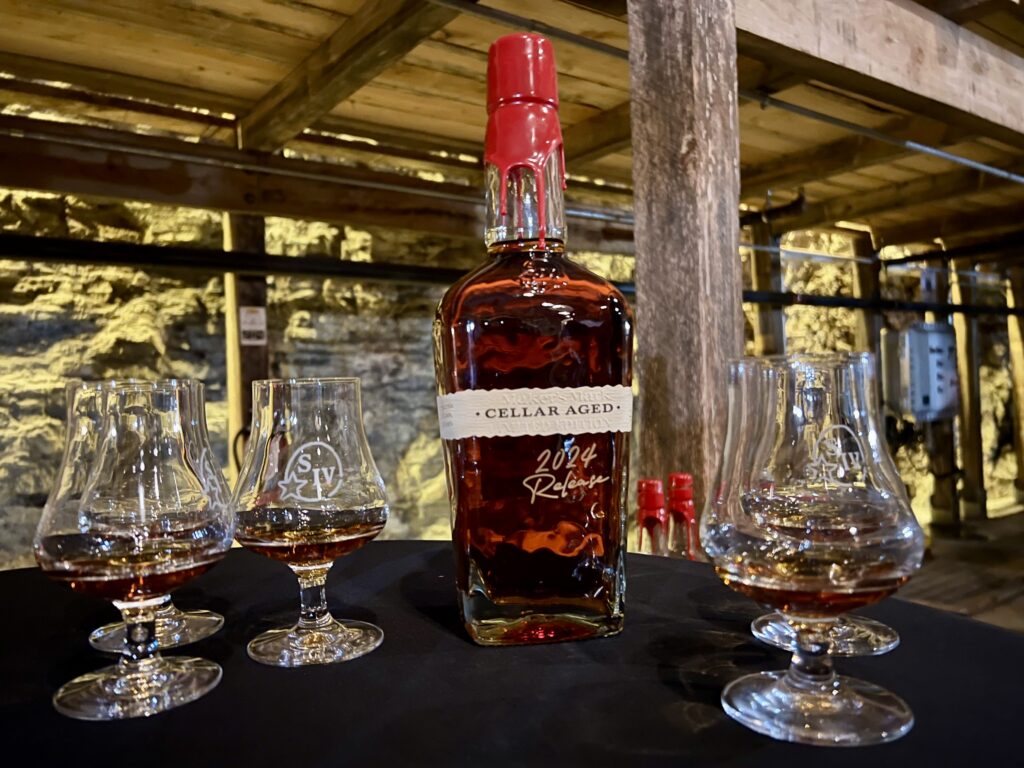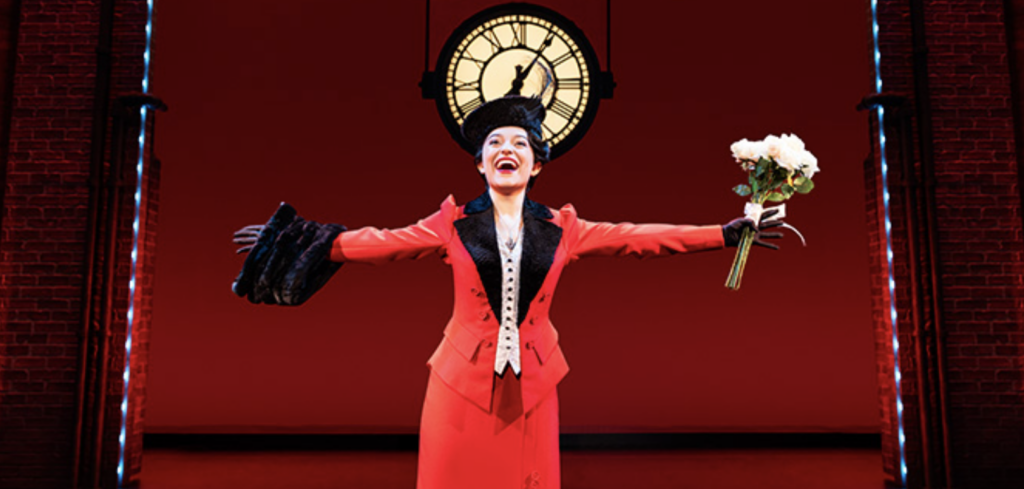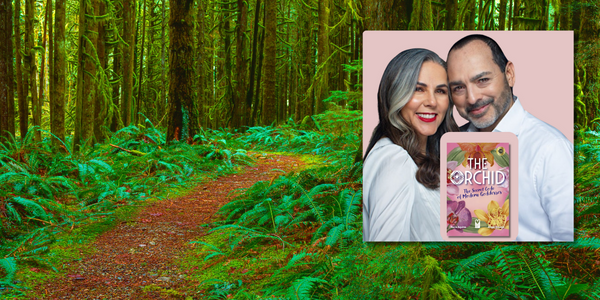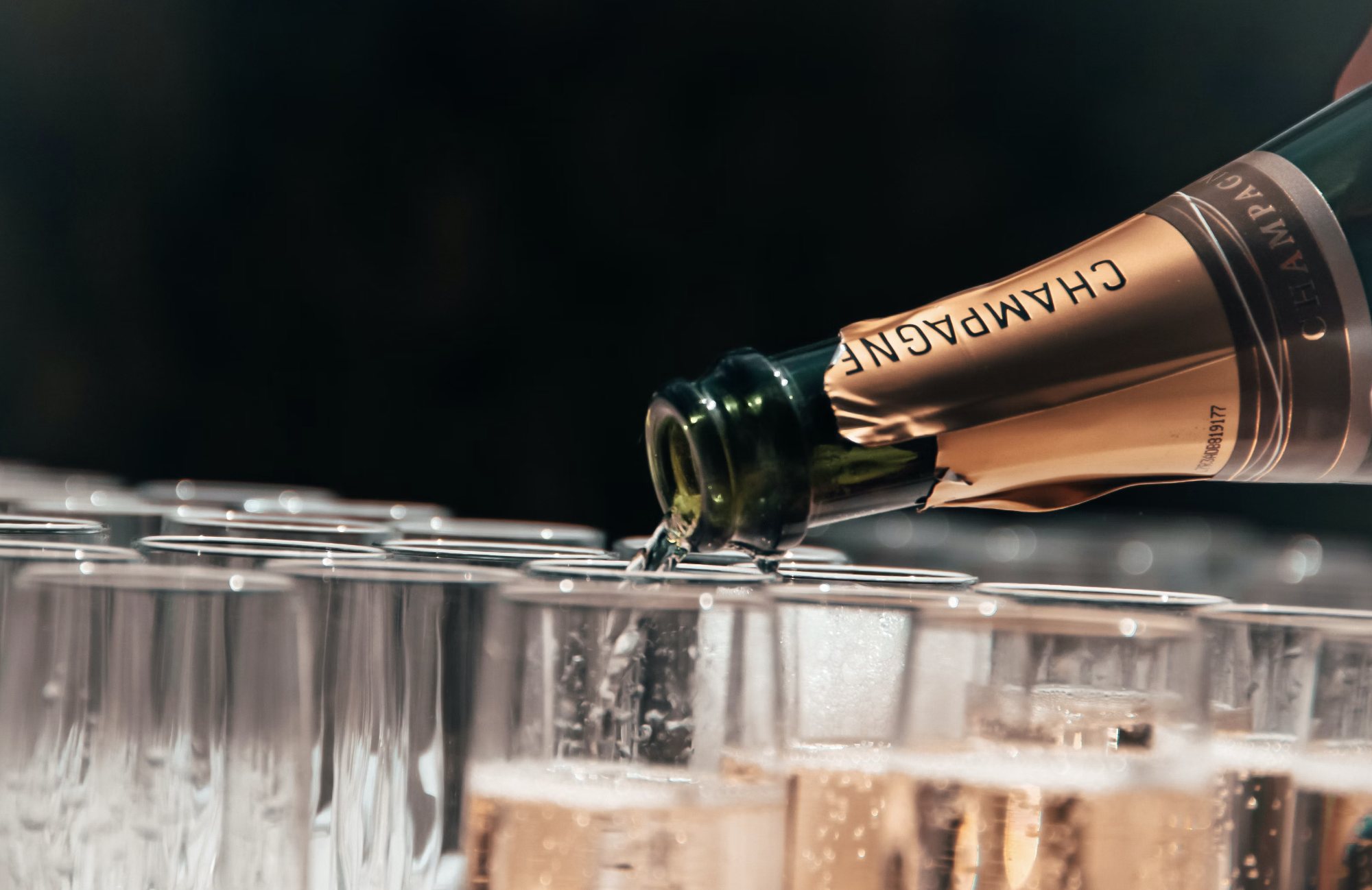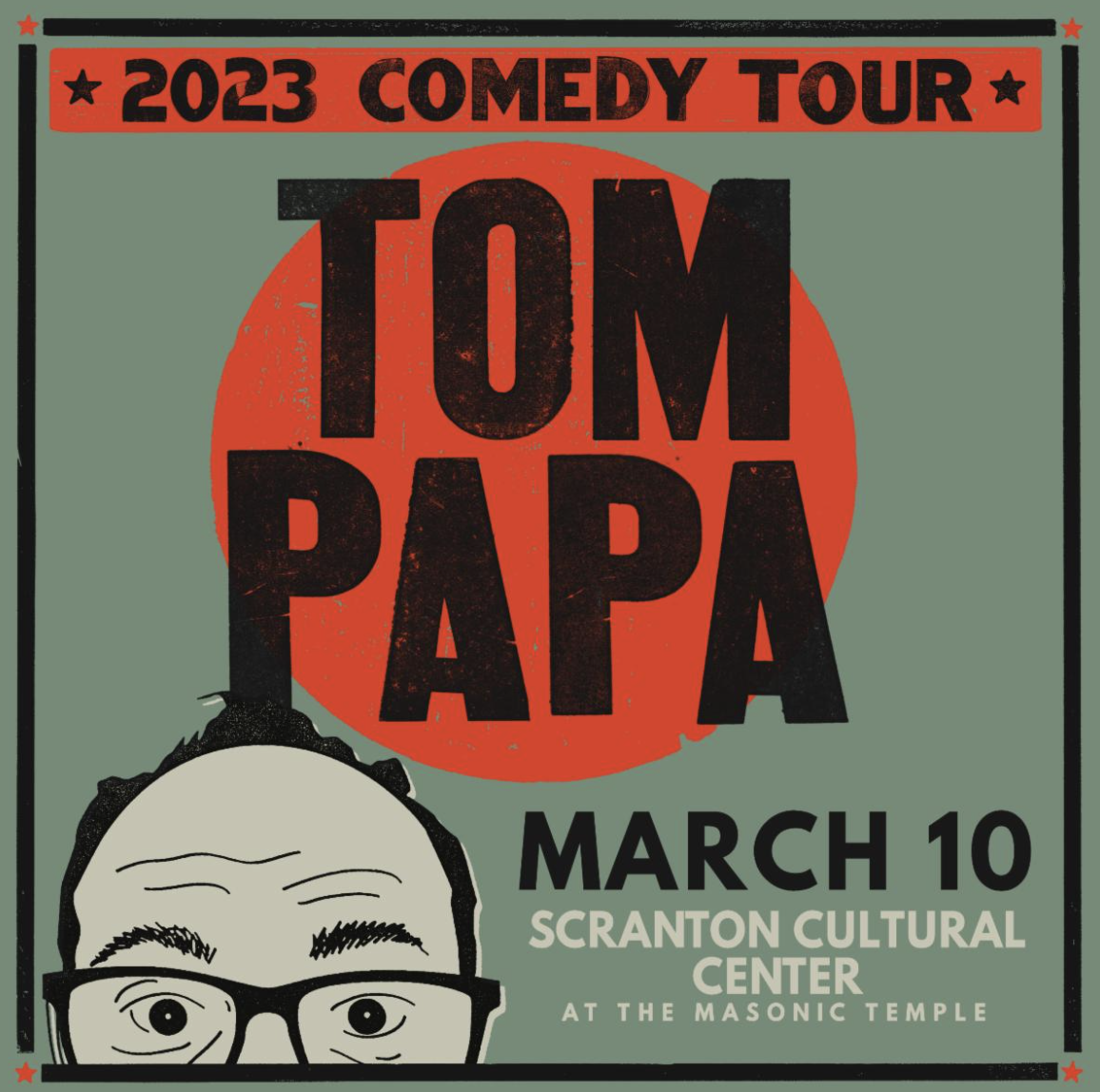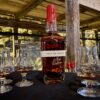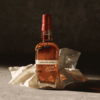What Does Paris Order in Philly! She Brings Back The Cosmo with new Absolut x Paris Hilton Cosmo Collection
Absolut is officially announcing its brand partnership with artist and businesswoman Paris Hilton and her next-gen media company, 11:11 Media, as two icons bring back the Cosmo in culture through a new drinkware line, music and events.

Absolut x Paris Hilton Cosmo Collection
As the Official Vodka of Coachella, Absolut and Paris gave fans an easter egg of the collaboration at the ultimate mixing grounds with her surprise appearance at the Absolut.LAND activation, and now, the Sliving Cosmo festival serve is getting a new drinkware glow up to enhance everyday happy hours.
Introducing the Absolut x Paris Hilton Cosmo Collection – an all-new blush pink Cosmo-inspired drinkware line available exclusively on Amazon starting today.
Building on Paris’ best-selling cookware line, the collection marks Paris’ first foray into drinkware that includes three styles of short-stemmed, hand-blown martini glasses available in a set of two ($29), as well as an insulated pink cocktail shaker with gold accents and a gold jigger ($25).
“From teaming up with Absolut
for my first live show last summer
through personal celebrations and professional events
this year, I’m so excited to announce my new drinkware line
designed to be enjoyed with an Absolut Cosmo,”
Paris Hilton
CEO of 11:11 Media
“Let’s live our best life this summer by bringing the Cosmo back – whether entertaining at home or at one of my upcoming shows.”
Crafted using Absolut Citron with its fresh, real citrus flavor, the Absolut Cosmo is a light and refreshing cocktail that can be sipped casually at home, yet sophisticated enough to be at the center of any event.
Absolut Citron is part of the history and culture of the Cosmo going back to the ’80s, and now decades later, this cocktail continues to be an icon. While you can make the Cosmo with different flavors of Absolut like Wild Berri or Watermelon as a versatile cocktail, the classic is made with Absolut Citron.
“The Absolut Cosmo is an iconic cocktail for a reason, and with its latest resurgence, we’re thrilled to be partnered with Paris Hilton to bring the timeless allure of the cocktail to life through this new drinkware collection,” said Matt Foley, VP of Marketing, Absolut. “As a brand born to mix, Absolut looks forward to bringing people together this summer over Cosmo-inspired celebrations.”
To purchase the Absolut x Paris Hilton Cosmo Collection and learn more about Cosmo recipes, please visit www.absolut.com/en-us/Cosmo and follow @AbsolutUS.
ABSOLUT SLIVING COSMO
1 1/2 Parts Absolut Citron
3/4 Part Triple Sec
3/4 Part Cranberry Juice
3/4 Part Lime
Garnish with orange twist
Fill a shaker with ice cubes. Add all ingredients. Shake and strain into a cocktail glass. Garnish with an orange zest twist.
ENJOY RESPONSIBLY. ABSOLUT® VODKA. PRODUCT OF SWEDEN. 40% ALC./VOL. DISTILLED FROM GRAIN. ©2024 IMPORTED BY ABSOLUT SPIRITS CO., NEW YORK, NY.
ABOUT PERNOD RICARD USA
Pernod Ricard USA is the premium spirits and wine company in the U.S., and the largest subsidiary of Paris, France-based Pernod Ricard SA., the world’s second largest spirits and wine company.
Pernod Ricard employs approximately 19,000 people worldwide, is listed on Euronext (Ticker: RI) and is part of the CAC 40 index.
The company’s leading spirits include such prestigious brands as Absolut Vodka, Avión Tequila, Chivas Regal Scotch Whisky, The Glenlivet Single Malt Scotch Whisky, Jameson Irish Whiskey, Kahlúa Liqueur, Malibu, Martell Cognac, Olmeca Altos Tequila, Beefeater Gin, Del Maguey Single Village Mezcal, Código Tequila, Monkey 47 Gin, Seagram’s Extra Dry Gin, Malfy Gin, Hiram Walker Liqueurs, Midleton Irish Whiskey, Redbreast Irish Whiskey, Aberlour Single Malt Scotch Whisky, Lillet, Jefferson’s Bourbon, TX Whiskey, Smooth Ambler Whiskey, Rabbit Hole Whiskey, Pernod and Ricard; such superior wines as Jacob’s Creek, Kenwood Vineyards, Campo Viejo and Brancott Estate; and such exquisite champagnes and sparkling wines as Perrier-Jouët Champagne, G.H. Mumm Champagne and Mumm Napa sparkling wines.
Pernod Ricard USA is headquartered in New York, New York, and has more than 1,000 employees across the country.
As “creators of conviviality,” we are committed to sustainable and responsible business practices in service of our customers, consumers, employees and the planet. Pernod Ricard USA urges all adults to consume its products responsibly and has an active program to promote responsible drinking.
For more information, visit: www.pernod-ricard-usa.com.
ABOUT 11:11 MEDIA
11:11 Media is a global, next-gen entertainment company at the center of pop culture – connecting content, community, and commerce – founded by Paris Hilton and entertainment industry veteran Bruce Gersh in 2021.
The company spans a broad array of businesses including film, TV, audio, music, books, consumer products, digital and web3, with passion points around lifestyle, fashion, beauty, wellness, art, travel and more. Elevating brands, building communities, and driving social impact through the power of storytelling, experiences, and products is the core mission of 11:11 Media.
YOU MIGHT ALSO LIKE
Southern sophistication in the City of Brotherly Love: Jack Daniel’s Country Cocktails RTD Hard Tea Pours Nationwide
Jack Daniel’s Country Cocktails Hard Tea Launches Nationwide
Jack Daniel’s Country Cocktails Hard Tea – a canned ready-to-drink that launched earlier this spring in 13 test markets – is rolling out nationwide this fall.
The RTD embodies Southern sophistication with a twist.
Jack Daniel’s Country Cocktails Hard Tea combines black tea, ripe, true-to-fruit flavor resulting in a balanced and sweet finish. With four classic flavors carefully selected, each can was crafted to please the palates of today’s modern drinker.
Country Cocktails can be found in select retail and convenience stores across the country in a 12oz. can (ABV 5%), 12-can variety pack containing four classic flavors: Original, Peach, Raspberry, and Blackberry; with the Original & Peach offered in 16oz. and 23.5oz. single serve cans that deliver consumers a refreshing and high-quality beverage experience for those who appreciate a good tea.
- Original: Known for its full-bodied refreshing take on a Southern classic. Combining the rich taste of black tea with a sweet, true-to-fruit finish, captures the essence of Southern sweet tea. It’s the perfect drink for relaxing on the porch and enjoying good conversation.
- Peach: A floral flavor that brings the juicy, sun-ripened sweetness to life. This option offers a crisp and refreshing experience, where the delicate honeyed taste comes to the forefront of the palate making it a delightful choice for any day of the year.
- Raspberry: Delivering a vibrant tartness, yet balanced with a subtle sweetness; this flavor presents a bold and smooth drink that’s as satiating as it is refreshing.
- Blackberry: Capturing the rich and juicy essence of blackberries, it offers a slightly tangy and flavorsome experience, making it a perfect choice for consumers who enjoy the bold taste of berries with a hint of Southern charm.
Coinciding with Country Cocktails Hard Tea launch is the RTD’s partnership with ACM and two-time CMT Music Award winner, Lauren Alaina, who has accomplished one of country music’s crowning achievements – becoming the youngest member of the Grand Ole Opry.
Lauren Alaina’s small town Georgia roots, love for comfort and authenticity make her the perfect ambassador for a beverage that prides itself on delivering a taste of the South in every sip. Both Alaina and Jack Daniel’s Country Cocktails symbolize Southern charm, together producing a match made partnership.
To celebrate the collaboration, Country Cocktails has partnered with Southern Living to offer fans across the country a chance to enter their sweepstakes and win a pair of tickets and flights to meet Lauren Alaina at her concert in Las Vegas at the Green Valley Ranch Backyard Amphitheater on October 25, 2024.
The sweepstakes will run from September 13 until October 11, 2024 and contestants can enter for a chance to win by visiting the link.
About Jack Daniel’s
Officially registered by the U.S. Government in 1866 and based in Lynchburg, Tenn., the Jack Daniel Distillery is the first registered distillery in the United States and is on the National Register of Historic Places.
Jack Daniel’s is the maker of the world-famous Jack Daniel’s Old No. 7 Tennessee Whiskey, Gentleman Jack Double Mellowed Tennessee Whiskey, Jack Daniel’s Single Barrel Tennessee Whiskey, Jack Daniel’s Tennessee Honey, Jack Daniel’s Tennessee Fire, Jack Daniel’s Tennessee Apple, Jack Daniel’s Bonded, Jack Daniel’s Sinatra Select, and Jack Daniel’s RTDs. Today, Jack Daniel’s is a true global icon found in more than 170 countries around the world and is the most valuable spirits brand in the world as recognized by Interbrand.
About Jack Daniel’s Country Cocktails
Jack Daniel’s Country Cocktails are premium malt beverages from the Jack Daniel’s Family of Brands. Jack Daniel’s Country Cocktails was introduced in May 1992.
Jack Daniel’s Country Cocktails and their respective flavor names are registered trademarks. © 2024 Jack Daniel’s. Jack Daniel Beverage Co., Louisville, Ky. Flavored Malt Beverage.
For more information, please visit www.countrycocktails.com.
Philly Food: “The Bear” Star Matty Matheson launches #TGISunday with Pacific Foods to Tackle the Sunday Scaries
Pacific Foods, a brand known for its organic and high-quality ingredients, has launched its #TGISunday content series to help people overcome the widespread phenomenon known as the “Sunday Scaries.”
Developed in partnership with chef and television star Matty Matheson, the series is designed to transform Sunday anxiety into a time for culinary joy and inspiration.
A recent survey by Pacific Foods* revealed the deep impact of the Sunday Scaries, with the average American experiencing this pre-Monday apprehension 36 times a year. Typically, the unsettling feelings begin around 3:54 p.m. on Sundays, leading to an average of six hours and six minutes** spent in dread each week—totaling a staggering 219 hours annually.
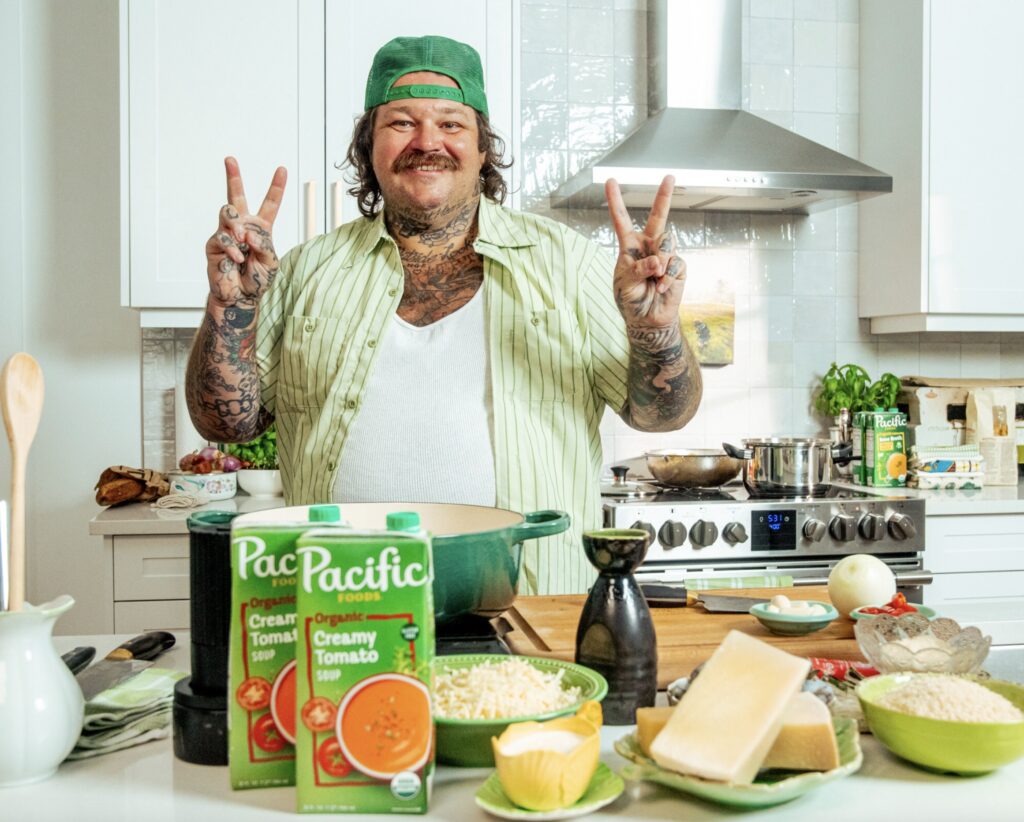
The Bear Star Matty Matheson launches #TGISunday with Pacific Foods to Tackle the Sunday Scaries
Recognizing that cooking serves as a soothing activity for many with 31% of people finding joy in preparing meals on Sundays, Pacific Foods is addressing these anxieties by offering easy, comforting recipes through the #TGISunday content series on its website.
Matty Matheson and a group of wellness and food aficionados will share curated recipes designed to combat the Sunday Scaries and embrace the calming, restorative power of cooking to unwind and reclaim their Sundays.
Chef Matty Matheson brings his trademark enthusiasm to the kitchen, making his stance on Sundays clear by turning them into a day of culinary excitement. “Look, I know Sundays can be a drag for a lot of folks, so let’s flip that script. Let’s rock the kitchen with some serious cooking that’s all about fun and flavor without it being a chore or another worry. Cooking isn’t just about eating; it’s about chilling out and making something awesome that feeds your soul,” explains Matheson.
Matty’s unique recipe—the Spicy Shrimp Pasta Bake—will be a highlight of the series, which will also feature content from various figures known for their culinary expertise. All recipes and tips will be available through social where viewers of the #TGISunday series are encouraged to share their own meal-hacking tips using Pacific Foods products. Fans can also enter to win a custom illustrated soup mug, designed by Pacific and Matheson, to add to their Sunday rituals.
“Matty Matheson’s vibrant personality and the joy he brings to food make him a natural fit to join us in our mission to take back Sundays,” said Erika Jubinville, head of Pacific Foods marketing. “He inspires all of us to bring more fun and creativity to our cooking routine, and sparks excitement for new ways to use Pacific products.”
For more insights into the #TGISunday series, please visit pacificfoods.com/TGISunday.
About Pacific Foods
Pacific Foods was founded in 1987 in Tualatin, Ore. and was acquired by Campbell Soup Company in 2017. For more than 150 years, Campbell (NASDAQ:CPB) has been connecting people through food they love. Generations of consumers have trusted us to provide delicious and affordable food and beverages. Headquartered in Camden, N.J. since 1869, the company generated fiscal 2023 net sales of $9.4 billion. Our portfolio includes iconic brands such as Campbell’s, Cape Cod, Goldfish, Kettle Brand, Lance, Late July, Milano, Michael Angelo’s, noosa, Pace, Pacific Foods, Pepperidge Farm, Prego, Rao’s, Snyder’s of Hanover, Swanson and V8. Campbell has a heritage of giving back. The company is a member of the Standard & Poor’s 500 as well as the FTSE4Good and Bloomberg Gender-Equality Indices. For more information, visit www.campbellsoupcompany.com.
NBA legend Brings Flavor to Philly with Hennessy Limited Edition by LeBron James
Basketball legend Introduces Hennessy, the world’s leading cognac, and basketball legend LeBron James are proud to unveil ‘Hennessy Limited Edition by LeBron James’ – a V.S bottle collaboration available globally starting on September 30, 2024.
This first-time collaboration between Hennessy and LeBron James unites two giants in their respective fields and brings an unexpected twist to fans and the industry alike. Their mutual respect, shared drive for excellence and commitment to pushing boundaries makes this partnership a celebration of greatness and serves as a reminder that Hennessy is made for more.

“As an admirer of Hennessy and its iconic brand, I’ve always appreciated its commitment to basketball and how it celebrates the sport’s influence on and off the court,”
lebron James
“I was fortunate enough to visit the Maison in Cognac a while back, and seeing the care and craftsmanship that go into creating each bottle was pretty incredible. This collaboration represents a shared sense of dedication and discovery coming to life for everyone to enjoy.”
Hennessy Limited Edition by LeBron James
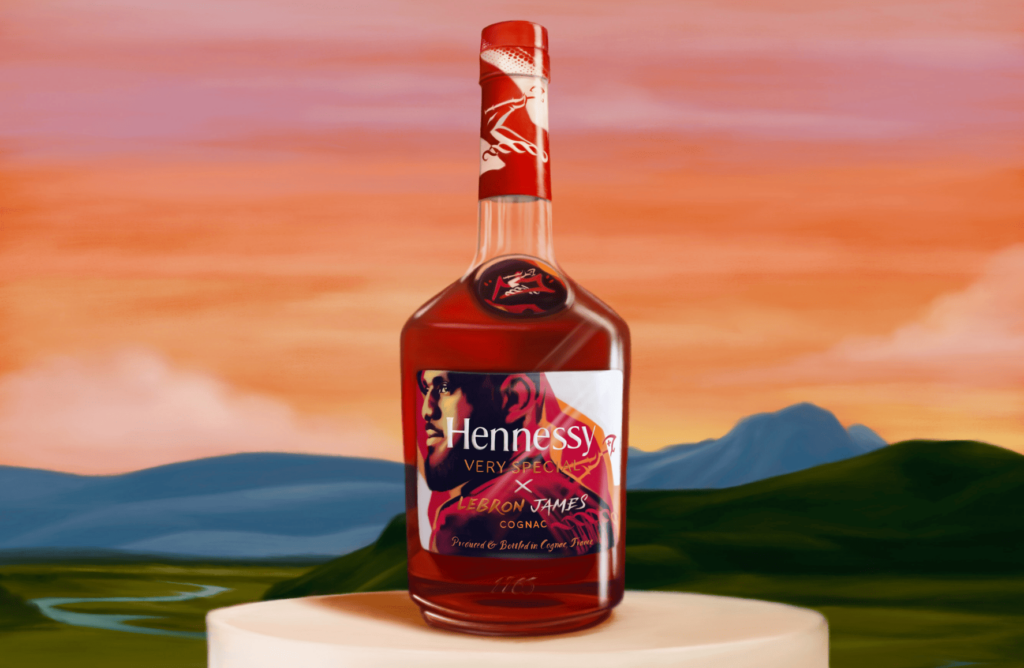
Hennessy Limited Edition by LeBron James
The limited-edition bottle features fresh, vibrant and distinctive designs which nod to James’ impact on and off the court. Both the bottle and gift box showcase an illustrative portrait of James in purple and orange. The iconic Hennessy Bras Armé is reimagined, sporting a sleeve as a tribute to James and intertwined with his trademark crown. The blend will remain the same and continue to deliver on the bold, yet smooth character that has made Hennessy V.S one of the most popular cognacs in the world.

Hennessy Limited Edition by LeBron James
“We are elated to officially welcome LeBron James to the Hennessy family after many years of mutual admiration and friendship,” said Antoine Varlet, Senior Vice President, Hennessy U.S. “LeBron is not just a basketball star, but someone who redefines boundaries in sport, style, culture and beyond. This partnership is more than just a collaboration, it’s a statement about what’s possible when two cultural icons come together.”
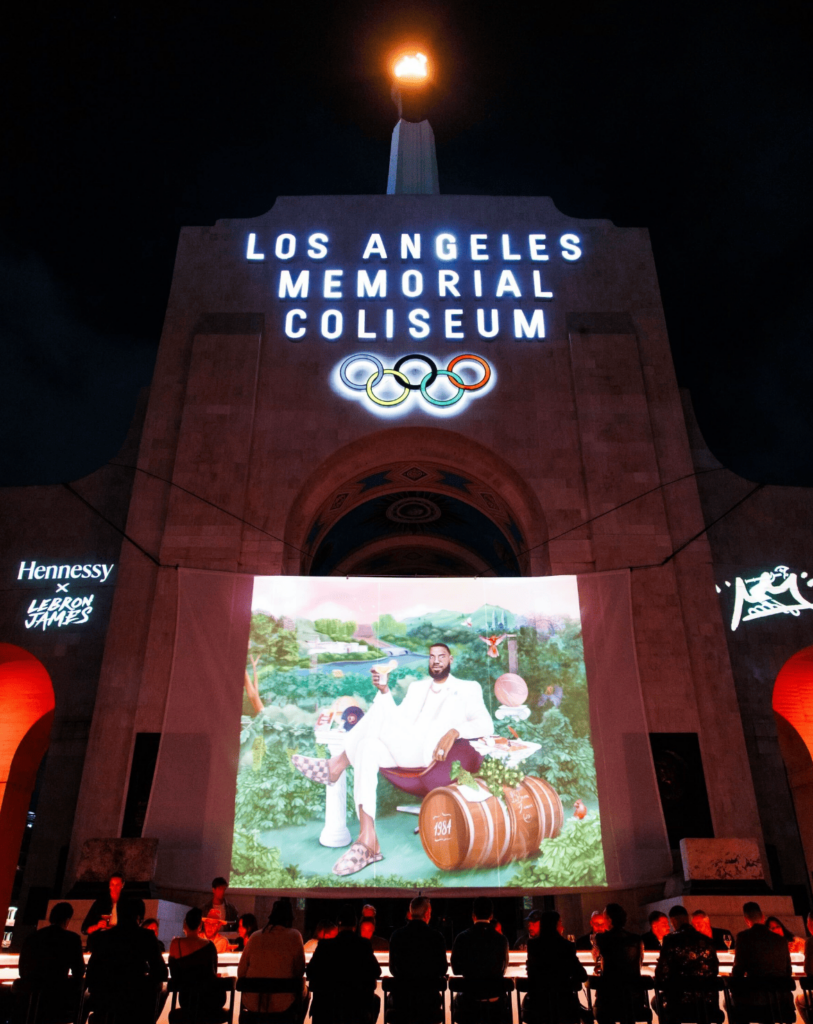
Hennessy Limited Edition by LeBron James
To highlight the cognac’s versatility, James put a fresh twist on the Hennessy Margarita cocktail featuring Hennessy V.S, lime juice, orange liqueur, orange juice and agave syrup. The addition of orange juice comes directly from James, inspired by a recent tasting experience in Cognac where he experienced the different possibilities of the spirit and discovered that Hennessy is enjoyed more than just neat, complementing a wide range of serves. This follows the release of Hennessy’s “Made for more” campaign, which shows how any drink or occasion can be made ‘more’ when you add Hennessy. Find the full recipe on hennessy.com.
The ‘Hennessy Limited Edition by LeBron James’ V.S will be available for purchase starting September 30, 2024.
You Might also like
-
Philly is Falling in Love: Dating Expert Andrea McGinty makes it easy with 33000Dates.com
Philly is Falling in Love: Dating Expert Andrea McGinty makes it easy with 33000Dates.com
We’re with Andrea McGinty, dating expert from 33000Dates.com
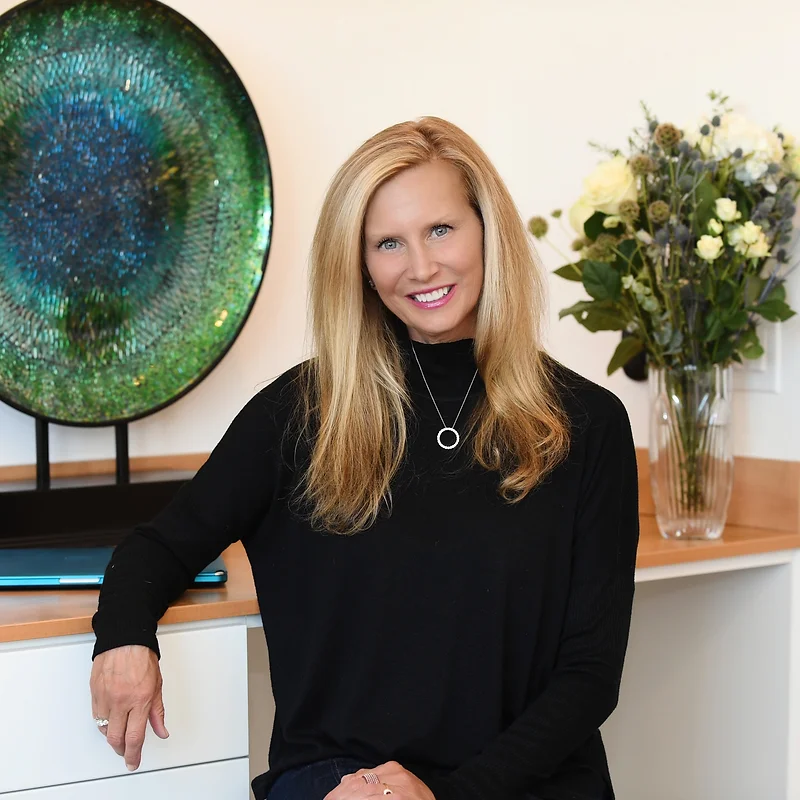
Dating Expert Andrea McGinty makes it easy with 33000Dates.com
Today’s conversation has been edited for length and clarity. For the full, un-edited conversation, visit our YouTube channel here.
So often we talk about food and wine and it’s usually for dates, romantic nights out, date night, anniversaries, vacations.

Dating Expert Andrea McGinty makes it easy with 33000Dates.com
Today we’re going to get to the source of what those date’s are actually about. So with us is a dating expert, Andrea McGinty from 33000dates.com.
Joe Winger:
So just to start things off, what inspired you to become a dating coach?
Andrea McGinty:
You mean what inspired an accounting / finance major to become a dating coach?
I started this when I was in my 20s. So this is the 1990s.
There’s no Google yet. There’s no online dating. It’s going to happen in the late 90s, but it hasn’t happened yet. At that point I was living in Chicago and I was getting married and five weeks before the wedding, he called it off and it was like – boom!
What do you do? First I cried, of course…
Anyway my friends started fixing me up on dates, still in your 20s and you know how those dates go,
They know someone that’s single, so they think you should like them, blah, blah, blah…
After some of those dates I was really thinking about it and I thought, it’d be great if there was a place you could go, like an executive recruiter for your professional life.
The same thing for your personal life.
And of course, there was nothing like that at the time. Even in high school and in college I fixed up two of my suitemates. They’re still with their husbands that I fixed them up with.
I was already good at this and I thought I could start this.
Anyway, fast forward.
I started a company in Chicago called It’s Just Lunch. Where people meet for lunch. We do all the work.
Fast forward, 15 years later, it’s still the same.
[At my first dating company, It’s Just Lunch] we had 110 locations globally and then I sold. Timing was perfect because online dating was coming out of its infancy and it was a mess it at first, just the scammers, the crazies, the horrible stories,
I thought, “Oh, wow, there’s a need. People have no idea what to do online and how to date.”
Dating Expert Andrea McGinty makes it easy with 33000Dates.com
Joe Winger:
Is there one big lesson to learn how to be more successful with dating in today’s world?
Andrea McGinty:
I think there’s a couple, there’s probably two lessons to learn.
#1 is you need to understand how to navigate online dating because there’s over 1400 sites out there.
#2 you’ve got to be really careful that you don’t give up too quickly.
Most people give up in the first 2-3 weeks because they go online, see a bunch of people, they probably went on the wrong site by the way too, like not the right site for them at all. Then they see these people who like them and they’re like, “Oh my gosh, this is online dating, forget it, I’m done, gone.”

And it goes back to they didn’t do it right, they had no idea what they were doing.
Joe Winger:
Can you bring some clarity to that and help somebody understand what are the first few steps are and how to do them correctly?
Andrea McGinty:
Absolutely. With online dating you need…
#1 you need to be really careful that you’re choosing the right site.
When we’re talking about 1,400 sites out there, I tend to work with the top 25 sites. When I’m working with a client I start initially with a zoom call with a client and get to know them what they’re looking for.
I work primarily with the 40 – something 50- something, through the 60s age group. Second time around, second acts in life type of thing.
Back to the right site…
When I’m choosing a site for a client after the zoom call, I’m thinking about. “Okay, what sites do I think they belong at?” And it’s very different if you’re in Los Angeles versus Houston versus Washington versus New York City or Orlando, Florida.
[The sites are] so different, how the sites function and the type of people that are even on the site.

I’m strategic too. I use three different large companies for research. I use Gallup, Pew and Statista. I pay to get research on a monthly basis and it really tells me the percentage of men to women on a site.
Some sites that are 80% men. Some sites are 80% women
You might be having an awful time on a site because you’re a woman and you’re at a site that’s 80% women. You’re in the wrong place.
So I do the homework with the research. Geographically where you live, level of education, income. Is that site’s membership increasing, decreasing?

#2 Your pictures.
Oh my gosh. I’m like a crazy person with photos because you have to have really great photos. I don’t mean LinkedIn photos, I don’t mean glamour shots, and not selfies.
The candids are nice because it’ll show you and your friends. Out playing pickleball, out playing tennis, out having drinks with your girlfriends. The professional shots. Depending on where you live, you’re just gonna get some great shots up against a graffiti wall in Brooklyn or a nice shot by the beach that are just a little more.
You want a couple full body shots.
You want the photos to be current, within the last year. Just like you don’t want to be surprised when you show up on the date and there she is. She has a few more wrinkles and a few more pounds than what I saw online.
It’s like you’re not being truthful about the whole thing.

Online dating is a visual medium. You’ve got to be presenting yourself. My LA and Orange County market, Dallas market, they get that. But there’s other parts of the country. I’m like no, we are not putting that picture of you online. There is absolutely no way.
#3 Your profile
Once they look at your photos online, if they like what they’re seeing, they’re going to read about you. It can’t be the same old stuff. Like I like to walk on the beach and I look as good in a tux as I do…. it puts me to sleep.
So a short, sweet, interesting, quirky profile sells.
A lot of times it’s hard to write about yourself. That’s why it’s nice to have somebody like me, write about you.
[Summarizing] You’re on the right site. The right photos. Your profile. Now it’s looking through high potential dates for you….
#4 Looking for High Potential Dates
Putting in algorithms, putting in search filters. That’s something I teach people how to do because otherwise it’s like you’re looking for a needle in a haystack and you want it like a needle in a little Easter basket.
Once we throw those filters and algorithms on, it gets rid of 80% of the people. Now we’re down to some of these people that look like high potential people for you.
#5 Send messages
We found 10 “someone” ‘s and now we send messages.
We don’t send them a weak heart or any of that kind of junk because men get so irritated. Because half my clients are men, they get so irritated with this.
Why are these women sending likes and hearts and no message?
That’s my constant battle with women.
Hey, you’re in your 40s, you’re not 90 when women had to wait to be pursued. We’re not living in our grandparents era, right? We’re equals. We can reach out to the men too.
The men totally appreciate when a woman sends a well crafted, interesting, short three sentence message.
The messaging is super important because you don’t want the: “Hi, how are you?” – or this is horrible. “Hi, you’re so good looking.” “Hi, you’re so beautiful.”
It was like, copy paste, they threw that out to the world, they sent that to everybody.
So now you’ve sent a message, hopefully he / she messages back.
#6 Schedule a date
The next thing is let’s get that date scheduled. This can all be done with just a couple texts on both people’s part:
“Okay, yeah, I’m totally interested. How’s Friday, at 5:30p at Bistro 110. Let’s meet for a glass of wine?
Because chemistry only takes place in real life.

Joe Winger:
In reality, do most dates get set up that quickly? It seems like there’s more delays and game-playing?
Andrea McGinty:
From the time you first send a message to someone, if the date has not been scheduled within five days of that initial text. There’s a 90% chance the date will never occur.
I’ll say to my client, “We’re going to go right for it right now.”
Write a couple of cute lines that are just for that person and then be like:
“You know what? I don’t really need to text you anymore or talk to you anymore because I’m ready to meet you. I’m super interested. How’s Friday night…?”
Sometimes you’ll get back a reply, what’s the rush?
I think to myself, what isn’t the rush here?
What do you want to talk about? Can’t you just get dressed?
We both live in Beverly Hills for goodness sakes. How long would it take us to get together and meet, right? We’re both in New York City. C’mon. Let’s do this in person.
If you’re getting those people that are drawing out the process, you either just cut bait. Just block them, goodbye, gone.
Or you say, you know what, if you don’t reply, you’re going to end up on my waiting list.
And you do it with a little humor, add an “LOL”
That can work too, where people crack up and they’re like, yes, I would love to meet you Saturday. Let’s grab lunch.
Joe Winger:
In today’s world of different levels of politically correct, cancel culture, different levels of sensitivity, regardless of whether you’re in a very conservative culture, progressive culture, etc.
How do we deal with any level of uncomfort when it comes to online dating?
Andrea McGinty:
First of all, you’re not in the workplace dating right now. Cause that’s where a lot of that happens, right?
This is where I say “Women, you’ve got a big advantage right now because you can feel very comfortable and free reaching out to men and get over that whole thing”.
Women wait to be pursued. There was this book that came out in the 90s: “The Rules.”
Wait to be pursued by the man and then don’t respond to him for three days. What the heck is that about?
No. Reach out to men.
Now for men, you’re not going to send stupid messages like, “Oh, you’re so gorgeous and sexy and blah, blah, blah”
Nobody wants that message.
You would find that offensive too.
As far as men reaching out to women, just do it in good taste.
Women are there to meet men. Creepy doesn’t happen very much online anymore. We’re out of that 2000 – 2010 era where more of that stuff happened.
There’s so many more hoops. Both parties jump through [hoops] on top notch dating sites now and dating apps now that verify that you are who you say you are and verify some information about you.
Joe Winger:
Most of the people watching this, they’re into food. That means fine dining. They’re into wine and cocktails and collecting wine.
What kind of a goal can they look for if they come to 33000Dates.com?
When they approach and connect with you, what should they be thinking about and preparing so they know how to best represent themselves in that first conversation with you?
Andrea McGinty:
Just be real with me and, people that are foodies and wine collectors, there’s a lot of us out there. There’s a lot of people out there that will find that very attractive.
There’s a lot of people that like to try different wine bars, they like to go up to Napa. Maybe that’s your third or fourth or eighth date,
Be real with what your interests are and… talking about food.
This goes back to when I’m writing your profile, when people just say, “Oh, I like Italian food.” I’m like no. Give me something here.
“I like carbonara with peppers and from Trattoria is amazing.”
It doesn’t have to be written in a snobby or snooty way, but it’s just like fun. Like you’re describing what you like to eat or your favorite foods or it could be talking about, you like this vintage of wine.
Be very specific with me because that’s how I can help you the most and be really upfront no, no PC woke stuff with me because this is your personal life.
Joe Winger
What are some realistic goals for your online dating experience?
Andrea McGinty:
We’ve got to make sure that we’re not listening to all the noise out there. We’re not listening to our negative friends about dating and friends and family can be two really negative forces because you get one of one of two things.
If it’s family, maybe a lot of them are married and they’re like, Oh, you’re good looking. You’re so awesome. You don’t need to do online dating. That is like for losers.
That is so not the story anymore.
You’ve got friends that are like, “Oh, I just tried Bumble. It was horrible”. “I did hinge. It was horrible.”
A lot of dating is going in with a good attitude. I’m not talking about rainbows and unicorns; and everything’s perfect or anything like that.
We spend a lot of our 20s and 30s becoming successful and working on our careers.
By the time we’re 40s, even 50s we’re there career-wise. So now, it’s time to focus on our love life.
That could be two very different pictures: it could be a second act because you’re divorced.
Or it could be you’ve been single and just all your efforts have been going into career and friends and travel and all this other stuff, good stuff you’ve got going on.
But you wake up one day and you’re like:
“Hey, I’m 45 and I’m single. What’s up with this?”
Go into online dating, approaching it the way you did your career. Strategically. It’s no fun to think about your love life, like strategically, hire somebody, think about how you play golf.
You didn’t just go out on the golf course. You took a bunch of lessons.
Everybody’s playing pickleball now. But you didn’t just go out on the court, even if you played tennis before. You took a couple clinics, right?
That very quickly threw you into the intermediate range all of a sudden because you put some effort into it.
Same with dating.
But if you want to do it effectively and pretty effortlessly, just like you did with golf, hire the pro to do this stuff for you.
My typical male client tells me I take 80% of the workload off him because he doesn’t have to think about it anymore.
I’m coming up and presenting ideas to him, presenting women to him and just getting them through. All of the hoops and the messaging and all that stuff. Getting them to the good dates because they’re out there.
There’s some markets, like Los Angeles and New York, that can be big complainers about dating. I think because they’re trying to do it on their own.
When I get online and go on the good sites in those two markets, there are so many good people on there.
It’s just a matter of having somebody doing a good portion of the work and pushing you.
And oh, here’s the other thing, accountability.
When you’re working with me, you have accountability because you’re going to talk to me next week. And I’m going to say:
“Okay, Tell me what happened to you last week.”
“How’d that date go?”
“Did you call back that other one that we talked about?“
I did text her after the date you said you were going to, what happened?
So that little push along the way and keeping you on track too.
Because we’re in a culture where, we’re educated, we’re taking great trips, we’re dining out. We’ve got a nice group of friends that we love to hang out with.
It can be really easy to sweep this all, to the wayside. There’s no reason because there’s a loneliness epidemic in the U.S. and we all know if you’re with somebody, that you really enjoy hanging out with you’re going to live longer and you’re gonna live happier too.
Right.
Joe Winger:
You’re offering great dating tips. Thank you.
Let’s say you’re someone who’s done the work on your protile, messaged all those people, asked for a date, and they’ve all disappeared.
What’s that person doing wrong?
Andrea McGinty:
You kinda gotta take responsibility for it. You’re doing something wrong.
Here’s the deal. You don’t know what you’re doing wrong.
But that’s stuff I can fix.
That’s another thing. You have to stay away from those free sites or sites that have free people on it because there’s no skin in the game there. They’re just dilly-dallying around, playing around on there and not really serious.
Part of it is recognizing the statistics that you’re going into up-front that for every 5 texts you send, 1 person is going to respond back.
I give my clients homework on a weekly basis, two sessions. That’s all I ask of them.
During those two 30 hour sessions they have to send out 8 messages. So I know by the time I’ve talked to them, they’re going to at least have gotten back 3 responses.
If their photos are really good, they might have 8 responses back.
If they haven’t already booked the date, craft the email, craft the text, craft the message that’s going to get that date in person. And get us there. Get us there.
Joe Winger:
Andrea McGinty from 33000Dates.com dating expert.
Any requests from the audience watching and listening?
Andrea McGinty:
I would just say, take a look around my site, maybe take the dating quiz that I have on the site. It’s fun. And it’s really fast. It’s 10 questions, and it goes right to me. It doesn’t go to any of my people. And. I can rate you and what you’re doing and tell you whether or not I can help you too.
So if you do take that quiz, give me as much info as you can. I don’t mean personal info, but like where you live, your age, but that’s all going to be on there. But take that quiz because that’s a good way to contact me and see if we might be a good fit and maybe I can help you if you really want to meet somebody.
Post Views: 1,704 -
Philly Wine: Wine Pro Alan Tardi Returns to NYC for Beyond Bubbles Class December 13
Philly Wine Lovers! Wine Pro Alan Tardi Returns to NYC for Beyond Bubbles Class December 13
Alan Tardi has worked as a chef, a restaurateur, a sommelier, a consultant to some of New York City’s biggest and best fine dining restaurants. He’s also written for magazines and publications, such as Wine Spectator, Wine and Spirits, Decanter, of course, the New York Times.
This past fall, Alan Tardi taught his very popular Italian Wine class, The Many Faces of Sangiovese.
Today Wine Expert Alan Tardi returns for a conversation about his new Champagne, Prosecco and Lambrusco sparkling wine class Beyond Bubbles on December 13 at New York Wine Studio.

NYC Wine: Wine Pro Alan Tardi Hosts Popular NYC Wine Classes: Beyond Bubbles on December 13
Alan, thank you so much for coming back. You have a new class called Beyond Bubbles.
Can you just give us an idea of Beyond Bubbles about the class itself?
Alan Tardi: The class is going to take place on December 13th. That’s a Wednesday from 6 – 7:30pm. And the venue is the New York Wine Studio located at 126 East 38th Street between Park and Lexington, so a couple blocks away from Grand Central Station in New York City.
It’s going to be called Beyond Bubbles. I’m really focusing on three archetypal sparkling wines. Champagne, Lambrusco, Prosecco.
And I have to say Prosecco from the original growing area, Cornigliano Valdiviadene, not the extended one right now.
These are the sparkling wines that, to me, took their own path and they can, in the case of Lambrusco and Prosecco they’re really ancient grape varieties that have been going on for a very long time.
Champagne, they’ve been making wine for a very long time. But as we’ll talk about, which is really fascinating, they’re adjacent to Burgundy and they’re both in close proximity to Paris where the King and the royal kingdom was. They were very competitive with their wine.
The counts in Champagne and the Dukes in Burgundy. They were really vying for their wine for the favor of the King. But Champagne, like Burgundy, began making it for a long time, hundreds of years, still wines. And when, and that was what they made for a long time.

In your class Beyond bubbles, can you give us an idea of how many bottles are going to be tasting from and learning about, and maybe one or two that are extra special to you?
Alan Tardi: We’re going to be tasting 10 wines. Three from Lambrusco, a very misunderstood wine. The grapes for Lambrusco are wild. Prosecco and Champagne.
The class is Beyond Bubbles. Wednesday, December 13th, tickets are on sale. Now it’s coming up very quickly.
Let’s really dive deep for a second and just get to know champagne’s history. The whole idea of sparkling wine was an accident.
Alan Tardi: Yes. It was originally considered a flub because they were trying to make still wines to be in competition with Burgundy and they were very good at it. The still wines of Champagne were highly regarded.
So it did happen by accident. What happened is that Champagne is much further North than Burgundy. It’s at the breaking point beyond 45 degrees North where grapes can’t grow anymore. So they had a hard time making wine. it got very cold after harvest. One of the big customers for champagne was England and they shipped a lot of wine in barrel to England.
They were put into barrels once the fermentation stopped, because it got very cold and then they would ship them to England eventually in the springtime..
Because they finished their fermentation too early because it got cold, the fermentation stopped. Once it got warm again, the ferment: the remaining sugar went to work on the remaining yeast and it created bubbles in a closed container.
So when people opened up the barrel, it was fizzy.
When that happened in France, people did not like it because it was considered a flaw. England didn’t have a problem with that.
Eventually the producers said, wow, these people really want to have the bubbly wine. The King of France became very fond of this wine. So it really took off from there, but it happened in England first.
Talk a little bit about who “The Father of Champagne” was and how he tried to prevent this from happening.
Alan Tardi: It’s a really great story. Dom Perignon is considered to be the father of champagne. He was a chef and while he was a monk, he took over as the steward.
The convent had a lot of land given to them as dues to the church. He was managing the winery there in order to sell wine to support the monastery.
He would select different grapes from different places. He created fractional blending and fractional pressing of the grape so it’s very gentle and soft, which is very important for the development of champagne. But this was a still wine.
He was trying to make a still wine. When it spontaneously started sparkling, he considered it a flaw. He tried to avoid it with everything that he could possibly do.
It became extremely popular.
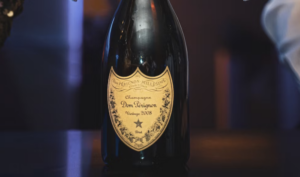
He said, “Brothers, I see stars in my glass.” And he was supposed to be blind by that point.
This whole thing of Don Perignon being the the father of champagne and seeing stars was made up as a marketing ploy by Robert de la Vogue, who was the head of a major champagne house. So they created this story around it. It’s a great story. I love it.
I wonder if that’s one of the reasons why champagne does swell during the holidays. When there’s decorations out and it really is a celebration.
Alan Tardi: I think it is. Sparkling wines bring something with them. There’s this effervescence, It’s like shooting stars. When they’re in the glass and you’re, you put them in your palate and they’re tingling and that’s all good.
Once the sparkling version was approved around 1725 by the King, it expanded throughout the world, it was a worldwide phenomenon.
You’ve mentioned the words method and process, share more about traditional champagne method?
Alan Tardi: It is a very stable process. You have to make a base wine. So you ferment grapes. They started sourcing different grape varieties from different areas throughout the extensive Champagne area. They would blend them together to make a decent wine. That’s the first fermentation.
Then they add a liqueur, called the tirage in French, it consists of primarily sugar, could be beet sugar or cane sugar; and yeast.
They’re put in individual bottles and then the bottle is sealed with a crown cap to keep the wine in the bottle. They would sit in a cellar for a period of time to create the secondary fermentation in a closed container. Like the initial fermentation process where the sugar goes to the yeast that is added to it. That creates a combination of sugar and yeast creates alcohol and carbon dioxide.
The carbon dioxide goes up, the alcohol stays in, and that’s how wine is made. But because [in still wine] it’s in an open container, the carbon dioxide goes out.
In a closed container [like in sparkling wine], in this case, a bottle, the carbon dioxide that was given off from the second fermentation was trapped inside the bottle. So once you open the bottle, the carbon dioxide would come up and out. And that’s where it comes from. That is what gives it the sparkle.
In Champagne, their method is known as the Method Champenoise.

They carry out the secondary fermentation in a closed bottle. Then, in the third part, they make the method Champenoise. It’s removing the sediment from the wine. There are many different ways to do it.
The most important common grapes for sparkling wine are Pinot Noir, Pinot Meurnier, Chardonnay. But your class reveals “lost grape varieties”. Tell me more about that.
Alan Tardi: These were grape varieties, typical of the area, that were used initially, but then people just put them by the side. The most important grape varieties were Chardonnay and Pinot Noir. Meunier was used as a workhorse, a filler, but it didn’t have the same identity that that Chardonnay and Pinot Noir had. Those are the three principal ones. Then [there was] these other varieties.
There’ve been major changes in the past 10 – 15 years in Champagne. It was driven by the Maison. Thousands of growers who supplied grapes to the Maison. Many times they would actually press the grapes, vinify the wine and then send the wine to the Maison.
They produced it for the houses. They didn’t have their own labels. That changed. A lot of the grower producers started labeling and selling their wine on their own. They got a lot of attention.
Some of these people were very loyal to the old grape varieties that were left on the side – they like Pinot Blanc, Pinot Gris – not very rare grape varieties, but people are not aware they are part of the grape varieties of Champagne.
Some people are really trying to promote those because it’s part of their culture. It’s part of their history.
There’s two others, Petit Mellier and Arban. It brings a whole new aspect to Champagne.
So we’re talking with Alan Tardi. On Wednesday, December 13th he hosts his new class Beyond Bubbles. One of those bubbles we’re going to be talking about is Prosecco. Frizzanti, Spumanti. Help us understand what these words mean, the region, how it all relates
Alan Tardi: Prosecco is one of the most misunderstood wines out there. There’s a lot more to it than most people are aware of. It’s not just a base for a Bellini or a cocktail, or just a cheap fix. There’s a lot more going on there than often meets the eye.
It’s a very old wine growing area. The original area is Conigliano Valdobbiadene. Fifiteen towns that make up the area in the hills just at the foot of the Dolomites in Veneto. They’ve been making wine there for a long time.
I have a feeling that the people who originally planted grape vines there were members of this Celtic Ligurian tribe that were up in Northern Italy, like in the Botellina and over in Liguria. They have this amazing capacity to plant vines in places where it’s very difficult.
Prosecco is very different from Champagne. I was living in Italy. I was going to Prosecco a lot because I did a story for Wine and Spirits Magazine about the Cartice area in Val di Biadena.
It blew my mind away. At the same time, I was starting to go to Champagne to research my book and I spent a lot of time there. I was finding a lot of similarities between these two very different wines.
Champagne began as a still wine called Coteaux Champenois. It had another wine in between. A sparkling wine, but a softer, lower amount of pressure called Cremant de Champagne.
In Prosecco, the traditional way of making wine was fermenting the wine. Then, they would put it in a container, either a barrel or a cement tank or in a bottle. The same thing happened. The fermentation would stop prematurely because it got too cold. Then, in the spring, when the temperature rose, the wine would wake up and the sugar would go back to work on whatever yeast was left.
Being in a closed container it would be fizzy. Now, in the bottle. The Italians had no problem with the sediment in the bottle.
I remember going there in 2013, I heard about this kind of Prosecco where the sediment was left in the bottle and people were a little bit embarrassed to show it.
This is actually called the Method Ancestral like they did in Limu.
They left the sediment in the bottle. It was just part of the wine. m In 1895, someone at Vinicultural Research Research Center in Asti named Martinotti, figured out they had a lot of sparkling wines in that area like Moscato.
Martinotti invented a system instead of having to do this process in the bottle, he created a large container with a top under pressure where the second fermentation could take place under pressure and then bottle it from there. It’s called the Martinotti Method that he created and patented in 1895.
Then 15 years later, in France he applied a sterilizing system. It’s referred to as the Sharma Method. That is the typical Way to make Prosecco not the traditional way.
Most producers in the area did not advance their methods until after World War II happened.
Mionetto, a very big Prosecco producer, only started using autoclaves in 1987.
At my tasting in New York on December 13, we’re going to taste three Prosecco’s. One is a still version from a winery called Bortolomeo, one of the most significant wineries of the area
After World War Two, he was very instrumental in creating a small group of producers and protecting their tradition of making wine in the area.
Now their daughters are running the winery. They’re still making a Prosecco. It’s part of the disciplinary of the rules for Prosecco Cornigliano Valdobbiadene.
That used to be the same with Coteau Champenois, the still wine of Champagne. You would not find those around.
While we’re talking about Prosecco, tell us about their growth — between the DOCG and the DOC?
Alan Tardi: One thing I want to say is that in the very small area of Corneliano, Corneliano about to be out in a Prosecco, DOCG. In about 2009, because of the large demand for Prosecco, and because of the fact that people were growing grapes and making wine outside
That appellation covers the entire region of Friuli and three quarters of the region of Veneto. So it’s a huge area, mostly flat. Higher yields, most of the vineyards can be worked, can be harvested mechanically. It’s a very different wine and that accounts for the vast majority of the 500 million bottles that are being produced.
The little area up in the hills has a much more complex growing area, soil to topography.
It hasn’t really been touched since the earth rose when that, when the sea and the sea receded on the other side of Cornigliano, there was a glacier that happened up in the north and it came down and just took all the land with it.
If you look at the map, the part is very narrow and the Cornelia part spreads down and is very wide and lower altitudes. So you have two very different soil makeups and different sections within the area. So it’s much more complex.
In 2009, they created the DOC and that’s when the original area, called Prosecco, changed its name to Corneliano Valdobbiadene and they were elevated to a higher level, a DOCG category.
They created subzones within this very small area. 43 different areas within the overall territory. If grapes come from one of those areas, they can have the name of that on the label.
At Beyond Bubbles on December 13, we’re going to be tasting the Tranquilo Prosecco from Botolomeo. We’ll taste a Colfondo from a young guy who’s been carrying on his family’s winery.
He always made wine in the cofondo method, and he just also started using the method traditionnel as well.
We’re going to taste his Cofondo, and then we’re going to taste Prosecco, Brut Nature, no sugar added, from the Cornigliano side, different softer, denser soil, lower altitude.
You can taste the difference.
That sounds incredible. We’re celebrating Beyond Bubbles, Alan Tardi’s new class coming up December 13th. One of the bottles, the Lambrusco. Can you talk a little bit about its reputation?
Alan Tardi: I think we should feel very excited. In the United States people still think about Lambrusco as a sweet, red, bubbly wine.
Lambrusco has really changed and it’s very complex. Usually wines don’t do well in flat areas, but in the Po Valley, that’s where they come from, they started out as wild vines.
They were cultivated by this old ancient tribe who lived in the area from about 12 to 6 BC, and then they just disappeared There are 12 different Lambrusco grapes. Three of them are really the most important because they have their own distinct identity and growing area.
Sorbara comes from the town of Sorbara, takes its name after it, and it has its own appellation.
Grasparosa di Casavetro, down in the south, it’s flat, but it starts to go up a little bit into the hills.
And then Salomino, in the north, which is the powerhouse of the three.
It’s really fascinating. They’re considered to be the most elegant because they’re all red grapes. In Champagne, it’s mostly white grapes. in Prosecco, the grapes are also predominantly white. There’s Pinot Noir that was one of these international grapes. It was permitted but only as a
The Sorbara is very light, transparent, elegant. There’s a lot of finesse to it.
The Graspa Rosa is dark red, juicy, fruity, floral, intense, foamy.
The Salomino is the workhorse, Sorbata is not self pollinating. And Solomino is often the pollinator for Sorbata.
At Beyond Bubbles on December 13, we’re going to be talking about unusual bottles. Tasting a Salomino wine from a winery called Lini 910, a wine is made using the method Traditionnelle. This wine is going to be 2006 vintage, and it’s spent nearly 14 years on the lees.
At our Beyond Bubbles class, I’m going to start with the Lambrusco, the oldest of the wines. Then the Prosecco. Then the Champagne. So there’s a buildup to that.
After the champagne, there’ll be a still champagne from the Valley de la Marne from the Mounier grape, and the Philipponat Champagne vintage.
After that, I thought it would be really interesting to look at two wines from made by people who went to the champagne area in the turn of the 20th century and they fell in love with champagne and they were compelled to go back to where they came from and make a wine using the champagne style method in their own way.
A wine from Trentino, Giulio Ferrari. And the other one is RTOs in in Catalonia in Spain, compare.
Alan Tardi’s class Beyond Bubbles will take place December 13, 2023 at New York Wine Studio. 126 East 38th Street New York, NY 1001. Readily accessible between Park and Lexington Avenue, just minutes from Grand Central Station.
For tix and more information visit NewYorkWineStudio.com
Post Views: 6,858 -
Philly loves Comedian Tom Papa – See Him LIVE at The Scranton Cultural Center March 10
Comedy Legend Tom Papa at The Scranton Cultural Center with his 2023 Comedy Tour on March 10
With more than 20 years as a stand-up comedian, Tom Papa is one of the top comedic voices in the country finding success in film, TV, radio and podcasts as well as on the live stage.
He is a regular guest on “The Joe Rogan Experience” podcast and the late night TV shows.
For tix to Tom Papa at The Scranton Cultural Center.
On May 12, Tom released his second book, “You’re Doing Great!: And Other Reasons To Stay Alive,” a collection of essays on how people really live in modern America and what’s truly good and wonderful about our lives.
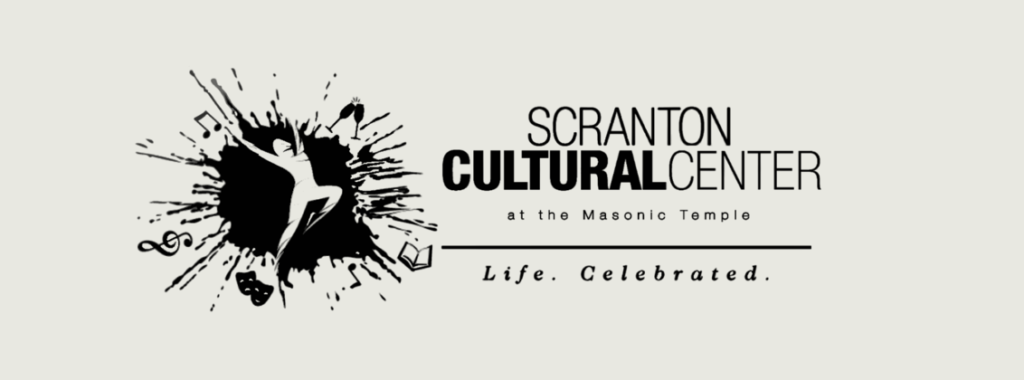
Tom Papa at The Scranton Cultural Center.
On February 4, Netflix premiered Tom’s fourth hour-long stand-up special, “Tom Papa: You’re Doing Great!” A hilarious rebuttal to the current cultural feeling of dread, Tom wants viewers to remember that they are doing great; life isn’t perfect, it never will be, and that’s okay.
Tom’s new podcast, “Breaking Bread with Tom Papa,” premiered on May 12 and features Tom and his guest for an hour of eating, drinking and enjoying life. Listeners are invited to take a seat at the table as Tom and his guests celebrate the true meaning of breaking bread with insightful, revealing and always funny conversations.
Tom is host of the daily Netflix radio show, “What A Joke With Papa And Fortune,” on SiriusXM’s Netflix Channel, airing Mondays through Thursdays from 10:00 AM – Noon ET.
To learn more, visit tompapa.com.
Post Views: 326




